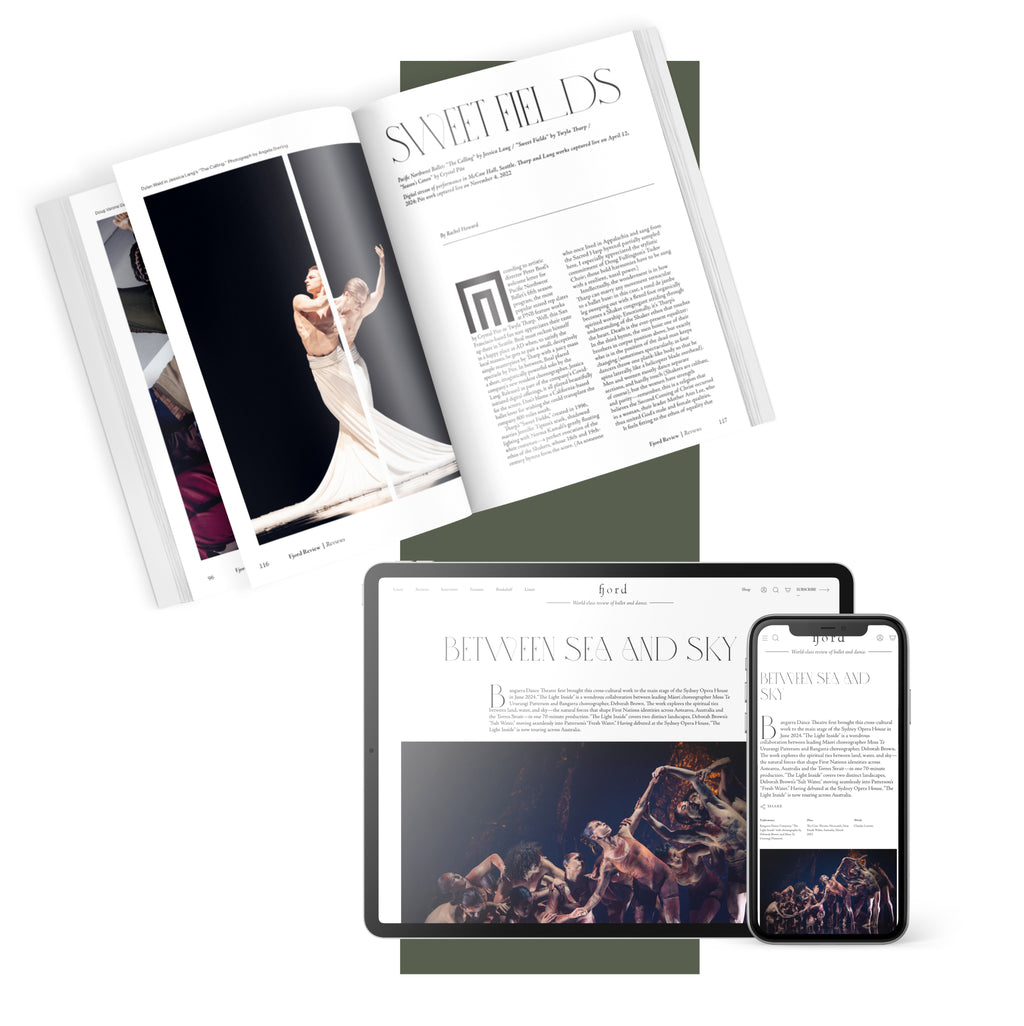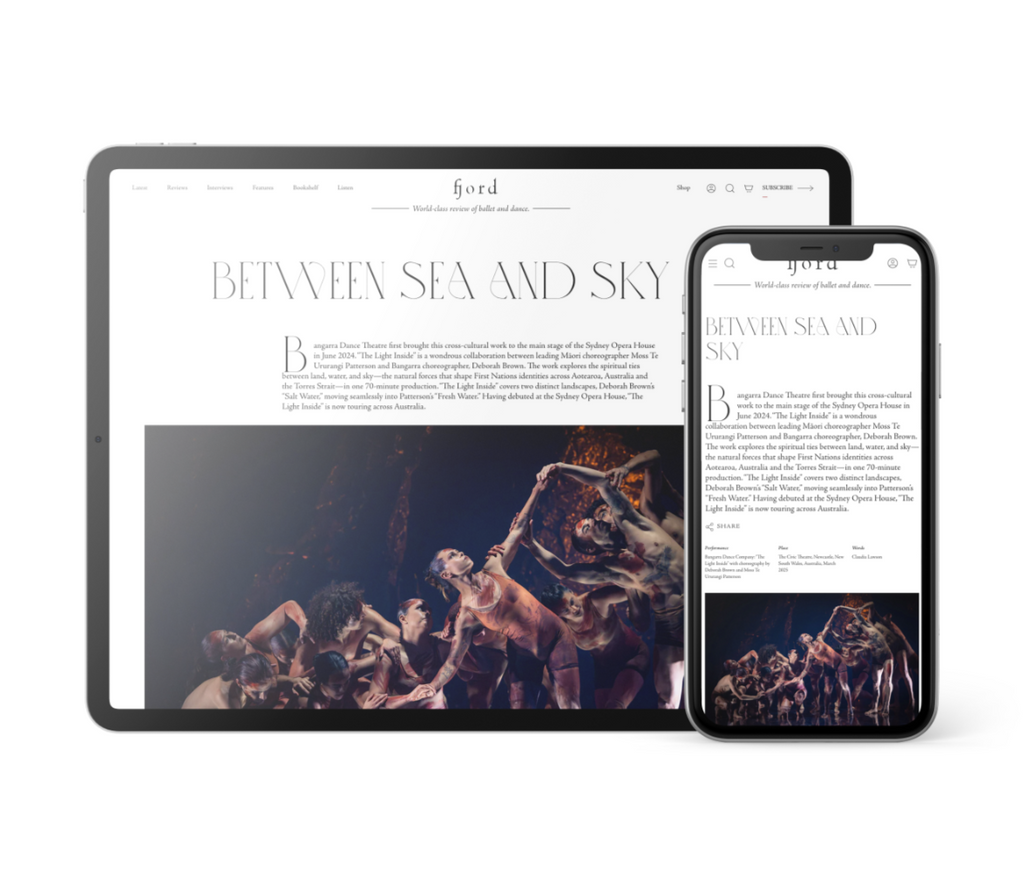It’s a matter of personal taste whether the radical re-interpretation of Petipa’s choreography works (I didn’t envy the ballerinas in having to dance it this way), but dramatically the action that follows is indecipherable, and a missed opportunity. Raymonda finishes the solo and walks off arm-in-arm with her new husband, John de Bryan. Nothing seems changed in their body language towards each other; Raymonda socializes among the party guests and all seems well. John de Bryan takes his variation. (It’s the toughest one of the ballet, and both Wang and first cast guest artist Joseph Caley struggled but fought through.) Raymonda sits some more with her groom and greets people as the happy farm workers resume dancing; de Bryan and Raymonda move among the ensemble as though Rojo didn’t know what to do with them, then drift off stage, for no discernible reason. Finally the whole cast gathers around the couple, and Raymonda steps outside the circle, pausing in front of the sexy man-that-got-away, Abdur Rahman, before grabbing her coat and lantern. In a flash, with the sunniest of smiles, she’s opting out of this romantic business altogether and heading back to the front. Huh? Why not have Raymonda interacting with or avoiding Rahman earlier in the scene? There has to be something more telling she could do to link her variation with this final decision?
The middle act, in which Raymonda and her two friends attend Abdur Rahman’s wild Turkish party, is much better and certainly the high point. Rojo gives Rahman’s character a fabulous solo with revoltades that land with a slap of the ground, followed by strutting jigs. Fernando Carratalá Coloma danced this role in England before joining San Francisco Ballet as a soloist last year; he’s principal caliber in every way, and smolderingly ideal for the part. But it was a thrill, too, to see longtime principal Esteban Hernández, usually so puppyish, take on Rahman in the second cast: He found his inner seducer! And yet Hernández’s innate sweetness made the chemistry all the more poignant; with an impressively bold Park opposite him as Raymonda, their relationship seemed viable, and I found myself irritated with Raymonda’s nun-friend Clemence (a busily chastising Jennifer Stahl) for preventing the hook-up. This scene also has the most high-drama passages of the rearranged Glazunov score, and one of Raymonda’s most exciting variations, with a marathon run of changement hops on pointe, during which Park threw in at least five entrechats. Plus, it featured the luscious rubato quality of Katherine Barkman as the flirty friend Henriette; Isabella De Vivo took on this role in the second cast and was also delightfully strong.
If I’m harping on the wooden quality of the character interactions throughout Acts One and Two, it’s because I’d be interested to see Rojo choreograph again. (She also created a “Cinderella” for the Royal Swedish Ballet, which premiered three months after this “Raymonda” in 2022.) Her ensemble movement for the male dancers is especially strong, full of rhythmic interest; she seems more interested in choreographing for them than the group women, whose phrases are too banal in the aforementioned long dream sequence. At the moment Rojo has no plans for re-imagining another classic—rather, San Francisco Ballet recently announced that Yuri Possokhov will choreograph a new “Eugene Onegin,” co-produced with the Joffrey, for 2026. But making scenes legible in character actions is a hard-won skill developed over time, and as Balanchine warned us, far more challenging to pull off in ballet than the other arts. In fiction writing, it’s a practice that forces a writer’s empathy and humility to grow exponentially. And those are qualities that serve an artistic director worth working for.











comments